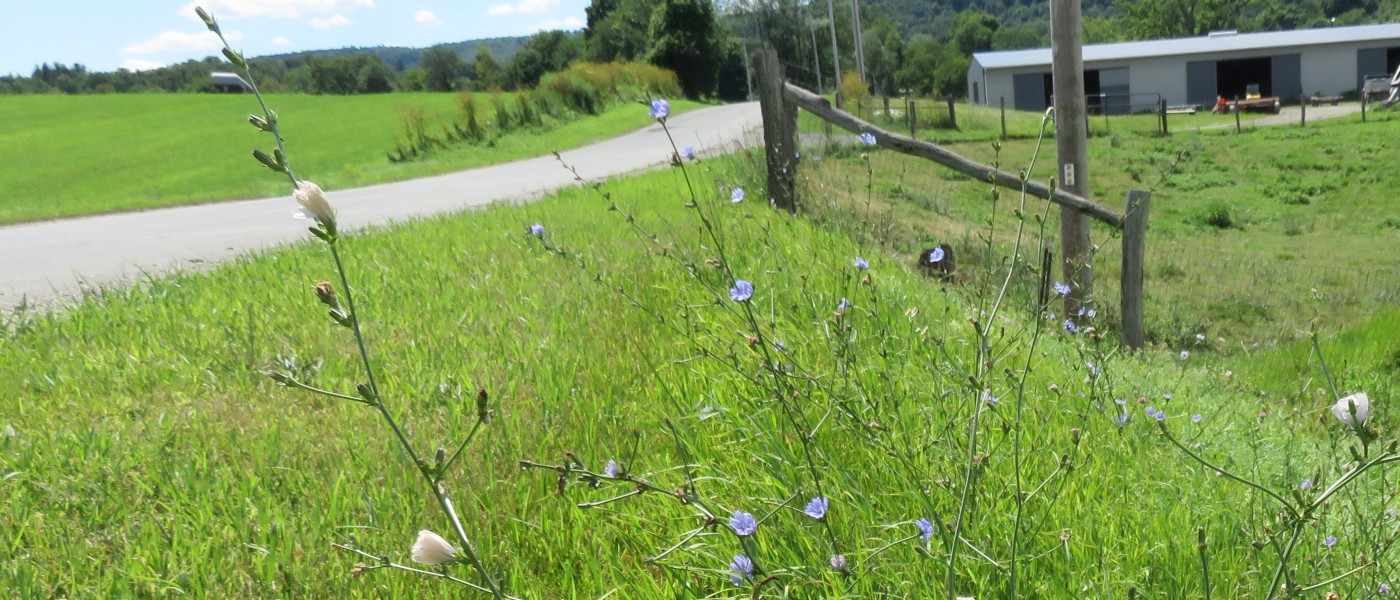Weed of the Month: Chicory
On sunny summer mornings, chicory (Cichorium intybus) will dazzle you with its periwinkle-blue flowers, but by later in the day, its bright blooms will have vanished, leaving just the scraggly stems and leaves of this otherwise scrappy roadside plant. Add it to a vase of wildflowers, and you’ll see that when placed in water, the blooms will close as the day wears on, and their color will fade to white.
An aster family perennial, chicory forms a taproot and grows from a basal rosette of leaves. When young, the leaves look (and taste) remarkably like those of its cousin the dandelion. Chicory is also closely related to the well-known salad green endive (Cichorium endivia), which is also often referred to as chicory in the U.S.—common names can be confusing!
Chicory is native to Eurasia, where its deep taproot has long been harvested, dried, and used for a variety of medicinal and culinary purposes. Before coffee was introduced to Europe, people drank chicory-root infusions much as they do espresso today. It has a coffee-like taste, though it contains no caffeine, and over the years, chicory has been a pinch hitter when coffee became scarce, expensive, or inaccessible. The Prussians started using chicory as a coffee substitute after Frederick the Great banned the importation of coffee in 1766; Confederate soldiers drank chicory "coffee" during the Civil War after a Union naval blockade interrupted supply; and Germans relied on chicory during World War II when access to real coffee became all but impossible. Many people developed a taste for chicory, and it is still commonly added to coffee in France.
These days, the chicory plant is generally tolerated as a noninvasive, harmless resident of the New York City area and the rest of the eastern U.S. It prefers dry, slightly alkaline, uncultivated soil—so it's unlikely to invade your garden beds. You'll more often see it growing along the side of the road or at the edges of constructions sites. In the countryside it’s a popular forage crop for livestock—tasty, nutritious, and toxic to internal parasites.
Chicory has garnered plenty of historical mentions in the writings of everyone from Pliny the Elder to Virgil to Thomas Jefferson, who extolled its inclusion in salads and cattle fodder alike. My favorite reference is from Carl Linnaeus, who included chicory in his famed theoretical floral clock since its flowers open and closed so regularly in Uppsala, where he was based. Here in Brooklyn, I prefer using a less formal way of using chicory to tell time—a closed flower is a sign that it’s time to consider a summer siesta.


